Ah, the humble carrot. An essential component of mirepoix – the holy trinity of classical French cuisine – I always feel like carrots aren’t celebrated the way they deserve to be. Carrots are beautiful, nutritious, delicious plants, and they happen to be edible from root to leaf. We waste too much food in this country, and it breaks my heart to think about all those tasty, frilly carrot tops being hacked off and discarded before the carrots get packaged and shipped off to supermarkets. I hope at the very least they’re used for animal feed or some other worthwhile purpose – I’ve searched the web numerous times and can’t seem to find the answer. If anyone knows, I’d love to hear from you! Meanwhile I happen to be fortunate enough to live in a city where I have access to a terrific greenmarket and high-quality grocery store produce, so I only buy bunched carrots with the tops still attached, and I use those lovely greens in things like pesto, salad, and chimichurri. Today, however, I’m turning them into a gorgeous infused oil.
I’m willing to bet that for most of you, carrots are a vehicle for eating things like dip and pâté, but they’re generally not the primary component of the dip itself. How about we change that? In this delicious recipe, carrots are roasted until lightly browned and fork-tender, then blended into a rich and hearty spread seasoned with fragrant Middle Eastern spices, lemon, and fresh mint. One taste and I promise you’ll never look at carrots and dip the same way again.
(Speaking of carrots and dip, I feel compelled to go off on a mini rant here – skip ahead if you’re not interested. You know those bags of shaved-down nubs labeled “baby carrots” that are sold everywhere nowadays and are usually included on a platter of crudités? Those aren’t baby carrots. True baby carrots are slender, dainty specimens that have been harvested while young, before they reach their fully mature size. Those perfectly smooth 2-inch rectangular chunks you see on the grocery store shelf come from mature carrots that have been specifically bred for increased sweetness – translation: higher sugar content – then peeled, cut into uniform pieces, and treated to prevent microbial growth before being bagged up. Sigh. I get it. Sweetness sells. As do cuteness, uniformity, and convenience, particularly in this country. So yeah, I see the marketing genius there, but seriously, when did it become too much trouble to wash or peel a carrot and cut it into sticks yourself?)
End rant, Let’s make dip, shall we?
Look at these beauties! If you buy organic, don’t bother peeling them – just give them a good scrub and you’re set. If you only have access to conventional carrots, always peel them before using. Trim off the tops, and if they’re really dirty or sandy, let them soak in a large bowl of cold water while you proceed with the carrots.
Here are my topped carrots ready to be cut. I recommend a roll cut so you maximize the surface area of the carrot for cooking (see here for a primer on roll cuts). Rub the chunks with a tablespoon of olive oil and season with salt and pepper, then spread them on a sheet pan; throw a large unpeeled clove of garlic on there as well.
Here are my carrot chunks oiled, seasoned, and ready to go into the oven. Now I’ll roast them until they’re fork-tender and browned in some spots. While they’re roasting, I sauté the shallot in some oil with a pinch of salt until softened and translucent, but not browned.
Here’s how the shallot should look after about 2 minutes – it’s wilted, but not browned. Now the spices go in, it all gets a good toss, and I continue to cook the mixture for another minute or so, stirring constantly, until the spices are fragrant.
Yours should look something like this. Turn off the heat and let it cool for a few minutes.
If your carrots had tops, get a pot of salted water going on the stove. Once it’s simmering, blanch the tops for about 10 seconds until wilted and bright green, then drain them and drop them into an ice bath to cool for a couple of minutes.
Drain the chilled tops, and use your hands to wring and squeeze as much water as you possibly can out of them. The drier, the better – I find it helps to twist them inside a clean kitchen towel. Once the carrot tops are nice and dry, drop them into a blender and add enough good extra-virgin olive oil to cover them by about ¼ inch. Turn on the blender and process into a smooth, brilliant green puree, adding more oil if necessary to get it moving. Line a fine sieve with a coffee filter or a few layers of cheesecloth, set it over a bowl or jar, and pour in the puree. If you have one of those mesh yogurt strainers, it also works beautifully for this without the additional coffee filter or cheesecloth. Now let gravity do all the work – the oil will seep through into the container, and all the solids will stay behind in the strainer. (Once the oil is strained out, discard the solids.) The oil will take a while, so let’s get back to the carrots – they should be done by now.
Oh hello there, perfectly roasted carrots! Hopefully yours look something like this. Carefully peel the garlic clove, and discard the skin.
The peeled garlic should be a lovely golden hue like this one. Now transfer it and the carrots to the food processor. (Alternatively you can use a high-powered blender for this as long as it can handle a thick puree.) Grab the pan with the shallot and spices, and use a rubber spatula to scrape everything into the food processor. Add the mint, sumac, a tablespoon of freshly squeezed lemon juice, and some salt and pepper.
Everyone’s in the pool. Now secure the lid, turn on the processor or blender, and drizzle in the tahini and remaining olive oil while it’s running. Process until the mixture is uniform. If it looks dry, drizzle in water or unsalted vegetable stock by the tablespoon to moisten. You can also add more olive oil if you’d prefer a silky puree instead of a textured pâté.
Doesn’t it look terrific? Taste it to make sure you’re happy with the seasoning. If you feel like it needs more lemon juice, salt, or pepper, add it now. If you’re not serving it immediately, refrigerate in an airtight container for up to 5 days. (I recommend enjoying it at room temperature, so when you’re ready to eat it be sure to take it out of the refrigerator for a few minutes to remove the chill.)
This pâté makes a killer vegetarian/vegan sandwich filling when slathered onto your favorite bread or wrap. Top it with avocado, sprouts, cucumber or radish slices, and a dollop of tahini or yogurt sauce. To serve it as a dip, drizzle on some of the carrot top oil you just made (or whip up a batch of Carrot Top Pesto), garnish with extra mint or a little lemon zest if you feel like it, and get to dipping. You can use crudités, pita chips, flatbread, falafel, or whatever else strikes your fancy.
Honestly, a spoon works too – this stuff is so good you’ll probably want to eat it straight from the bowl. No double-dipping though!
Lest you thought I forgot, here’s my strained carrot top oil. How insanely beautiful is that emerald green color?! Store the oil in a glass jar in a cool, dark place for up to a week. You can use it in vinaigrette, or drizzle it over roasted vegetables, chicken or fish.
Enjoy!
- For Pâté
- 60 ml (4 Tbsp) olive oil, divided
- 1 lb organic carrots* (6-8 medium), with tops if possible
- Kosher salt
- Freshly ground pepper
- 1 large garlic clove, unpeeled
- 1 medium shallot (abut 1 ounce), peeled and thinly sliced
- ¾ tsp coriander
- ¾ tsp cumin
- ½ tsp Aleppo pepper flakes
- ¼ tsp ground ginger
- ¼ tsp smoked paprika
- 1 Tbsp chopped fresh mint leaves
- ½ tsp sumac
- 30 ml (2 Tbsp) tahini
- 30 ml (2 Tbsp) freshly squeezed lemon juice, or more to taste
- Water or unsalted vegetable stock as needed
- For Carrot Top Oil
- Tops from one bunch carrots
- Extra virgin olive oil
- Preheat oven to 375°F.
- Trim tops off carrots, and set aside (or soak in a bowl of cold water if very dirty).
- Prep and cook vegetables: Slice carrots into 1-inch oblique/roll cuts, and toss with 15ml/1 Tbsp olive oil, about ¼ tsp salt, and a few grinds of pepper. Spread carrots and unpeeled garlic clove on a sheet pan and roast for 30 minutes, tossing occasionally, until carrots are fork-tender and lightly browned in some spots.
- While carrots and garlic are roasting, heat 2 teaspoons oil in a small sauté pan over medium. Add shallot and a pinch of salt. Cook, tossing or stirring frequently, for 2-3 minutes or until softened and translucent. Add coriander, cumin, Aleppo flakes, ground ginger, and smoked paprika, and toss to coat. Continue to cook for one minute or until spices are fragrant, stirring continuously. Let cool slightly.
- Make Carrot Top Oil: Bring a pot of salted water to a boil and blanch carrot tops for 10 seconds, until wilted and deep green. Drain and plunge into an ice bath to cool. Wring carrot tops dry, transfer to blender, and cover with olive oil by ¼ inch. Process until smooth. Line a fine sieve with a coffee filter or 2-3 layers of cheesecloth and set over a bowl. Pour puree into sieve and set aside to drain until all oil has dripped into bowl. (When oil has drained, discard solids.)
- Process pâté: Peel roasted garlic clove, and transfer carrots and garlic to food processor (or a high-powered blender). Using a rubber spatula, scrape in shallots, spices, and their cooking oil. Add mint, sumac, tahini, lemon juice, 2 tablespoons water, a heaping ¼ teaspoon salt, and 2-3 grinds black pepper.
- Cover with lid and turn on processor or blender to medium speed, drizzling in remaining olive oil (2 tablespoons + 1 teaspoon) while machine is running. Process until smooth, adding more water, stock, or olive oil a tablespoon at a time if you prefer a smoother consistency. Taste for seasoning, and add remaining lemon juice and additional salt and pepper if desired.
- Serve: Top with optional Carrot Top Oil or Carrot Top Pesto, and serve with crudités, chips, or falafel for dipping. Alternatively, use as a sandwich spread.
- Refrigerate pâté in an airtight container for up to 5 days. Store Carrot Top Oil in a glass jar in a cool, dark place for up to a week.
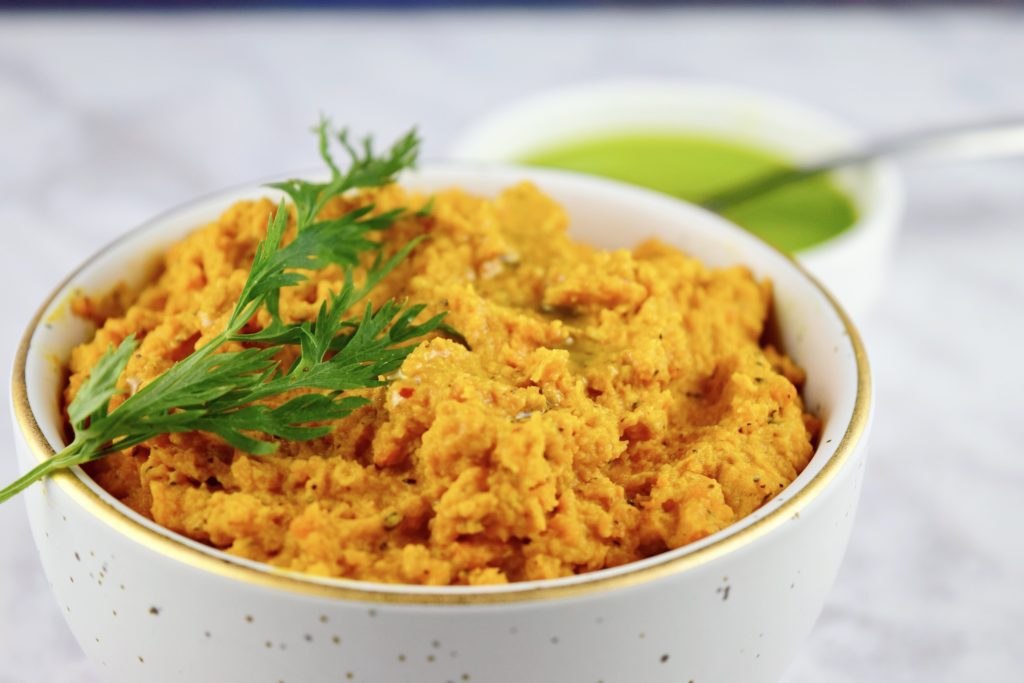
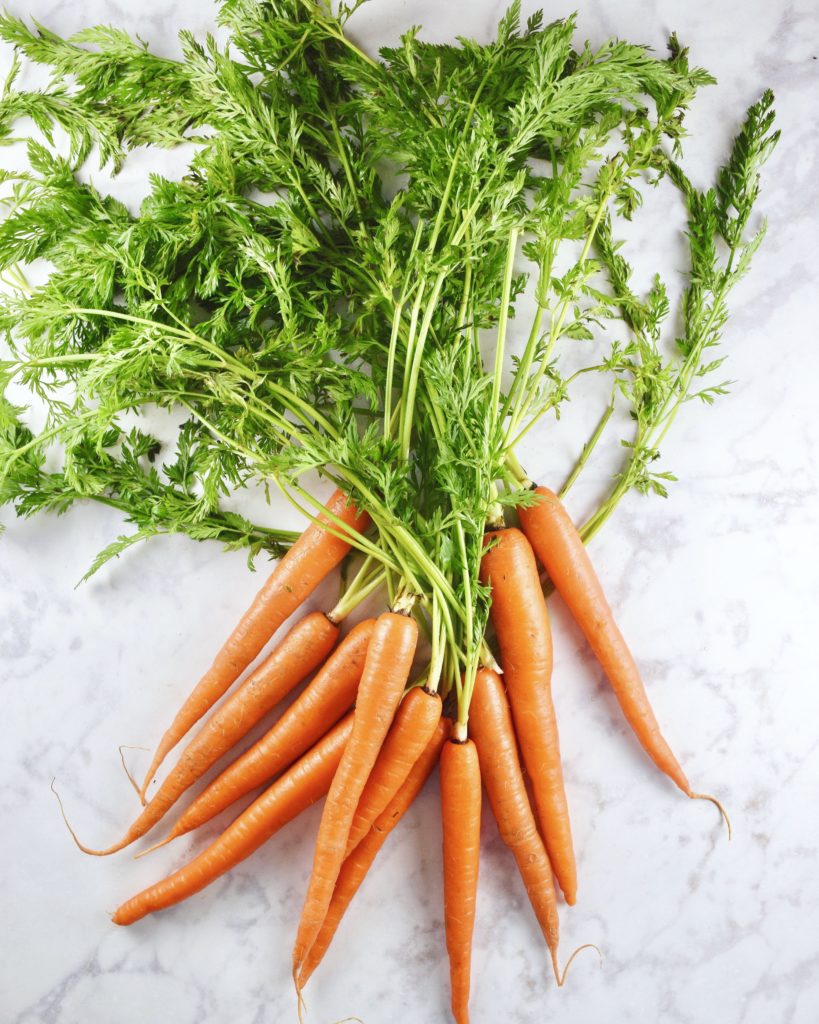
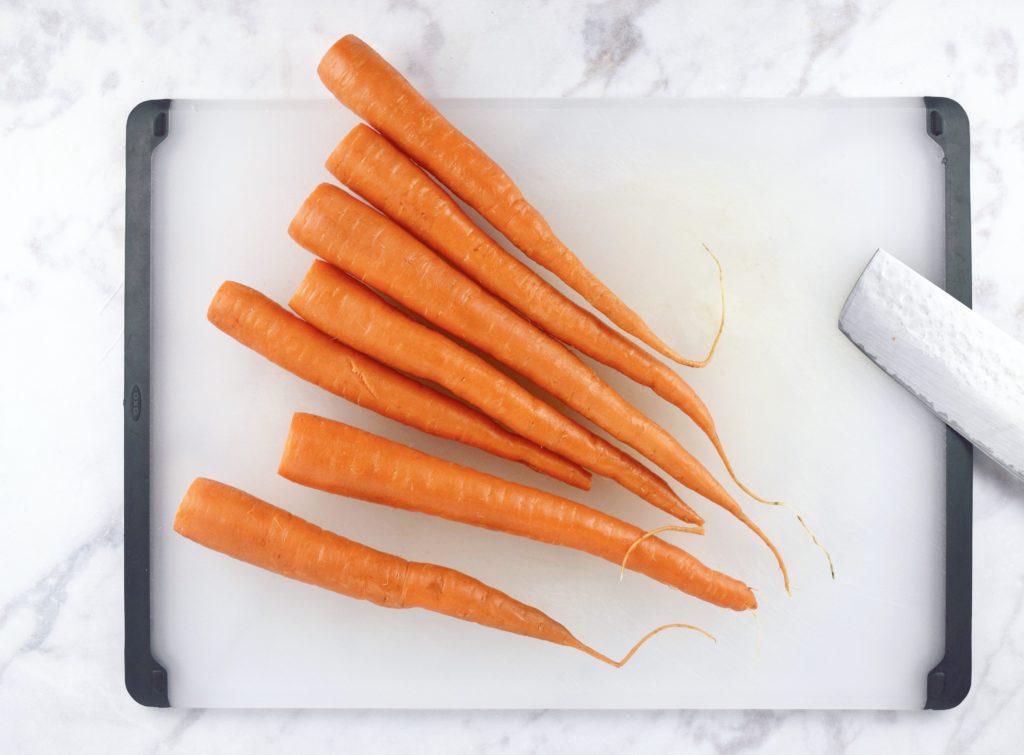
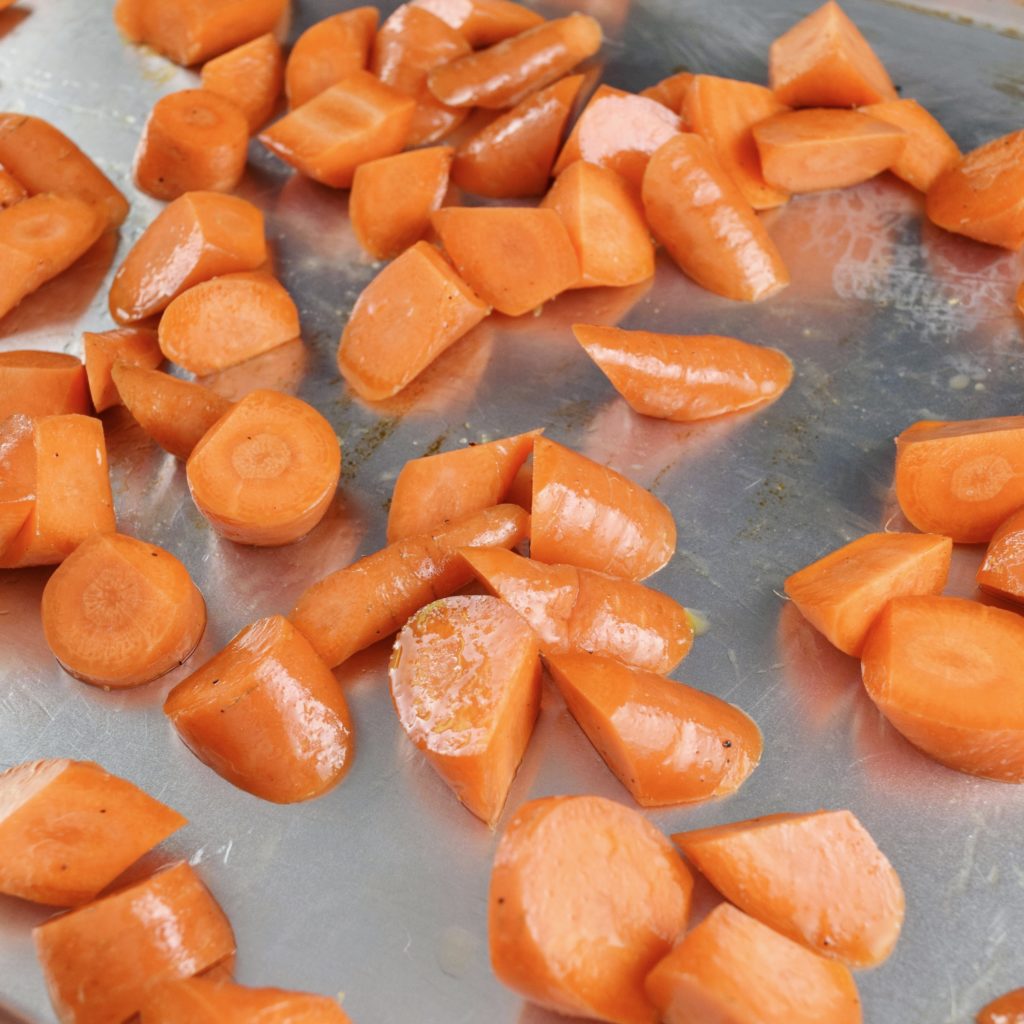
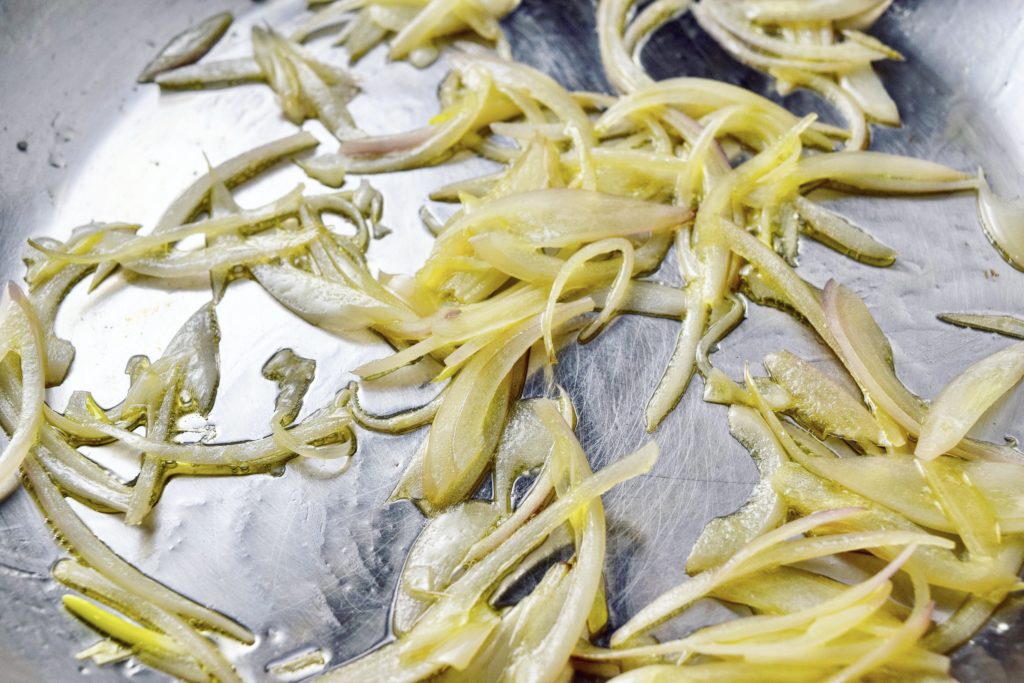
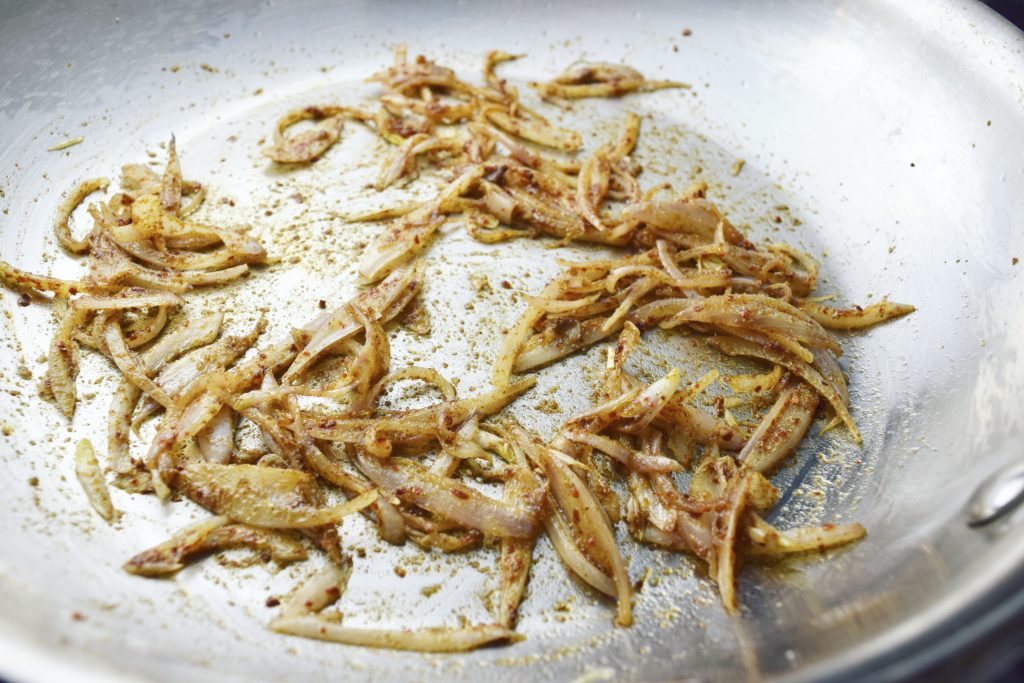
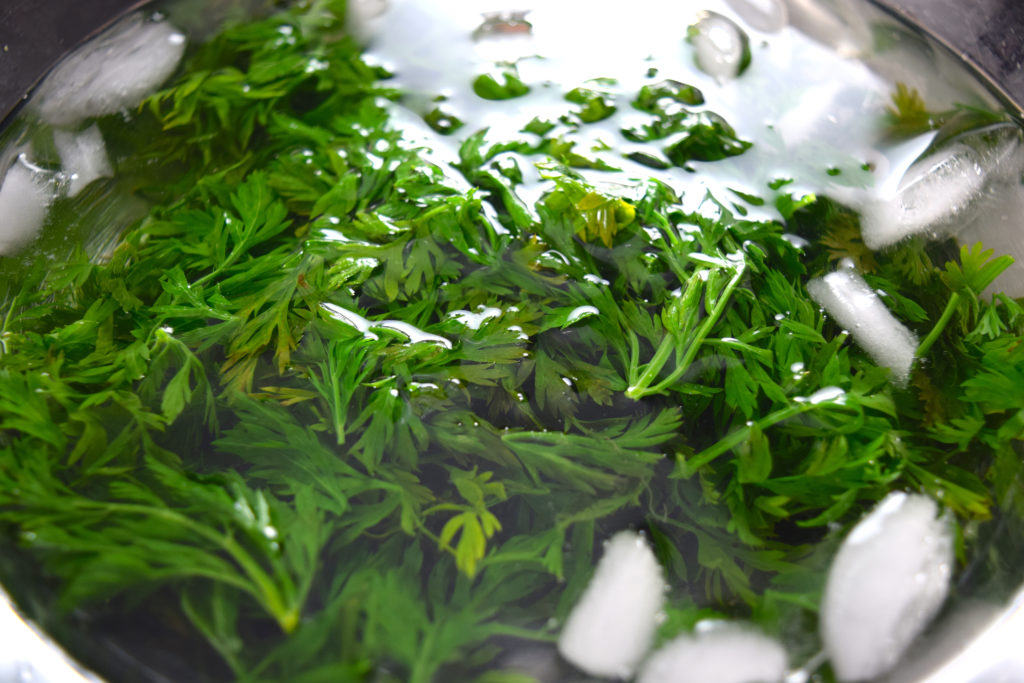
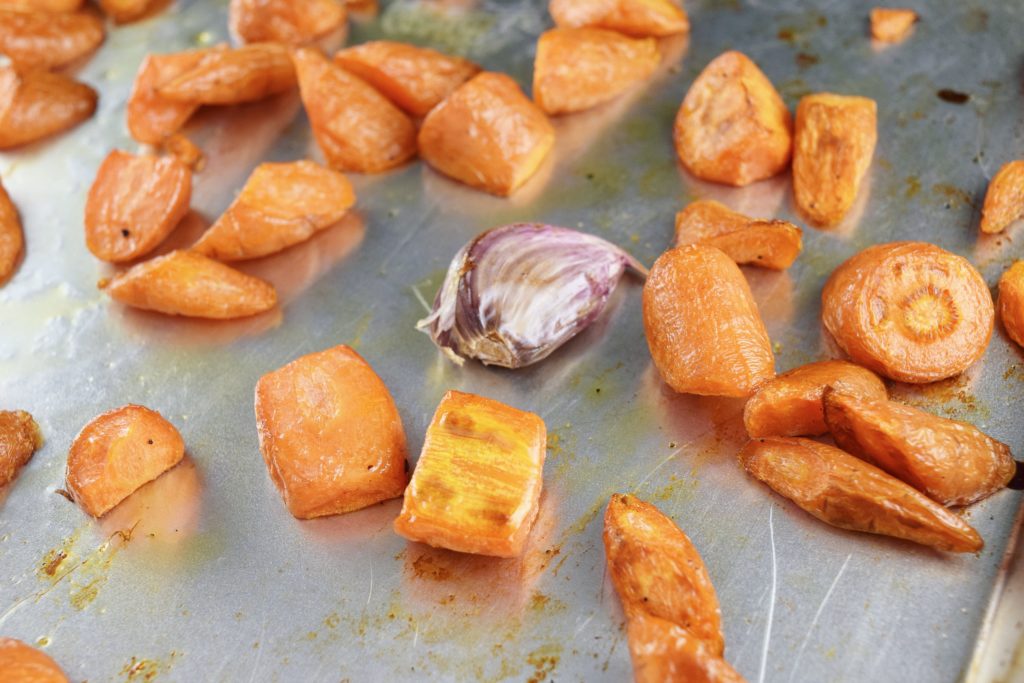
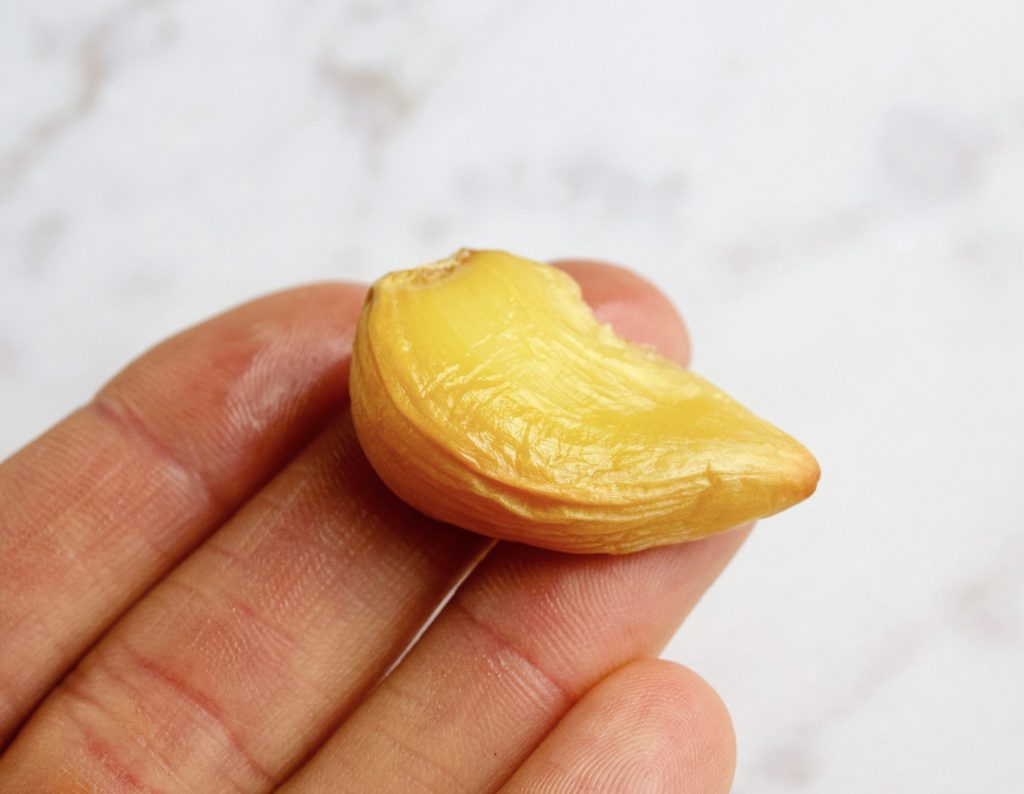
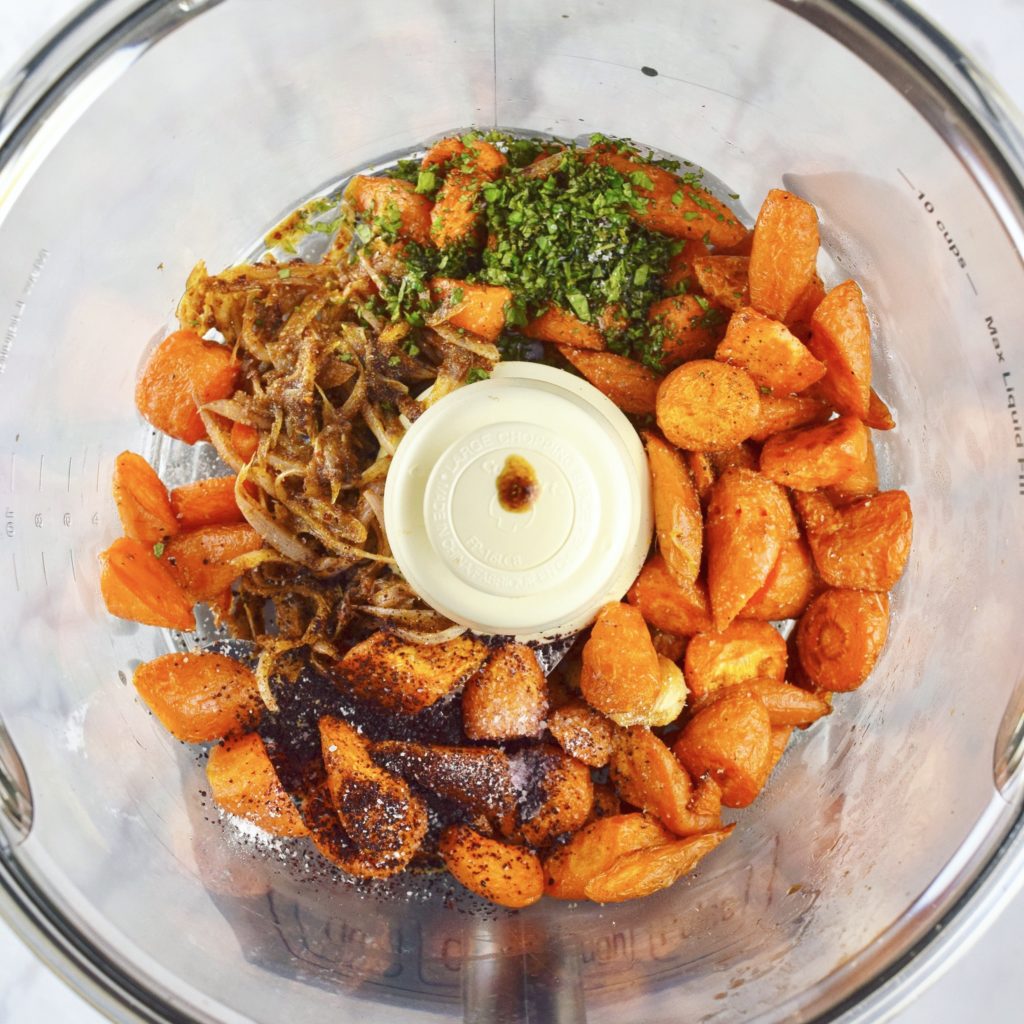
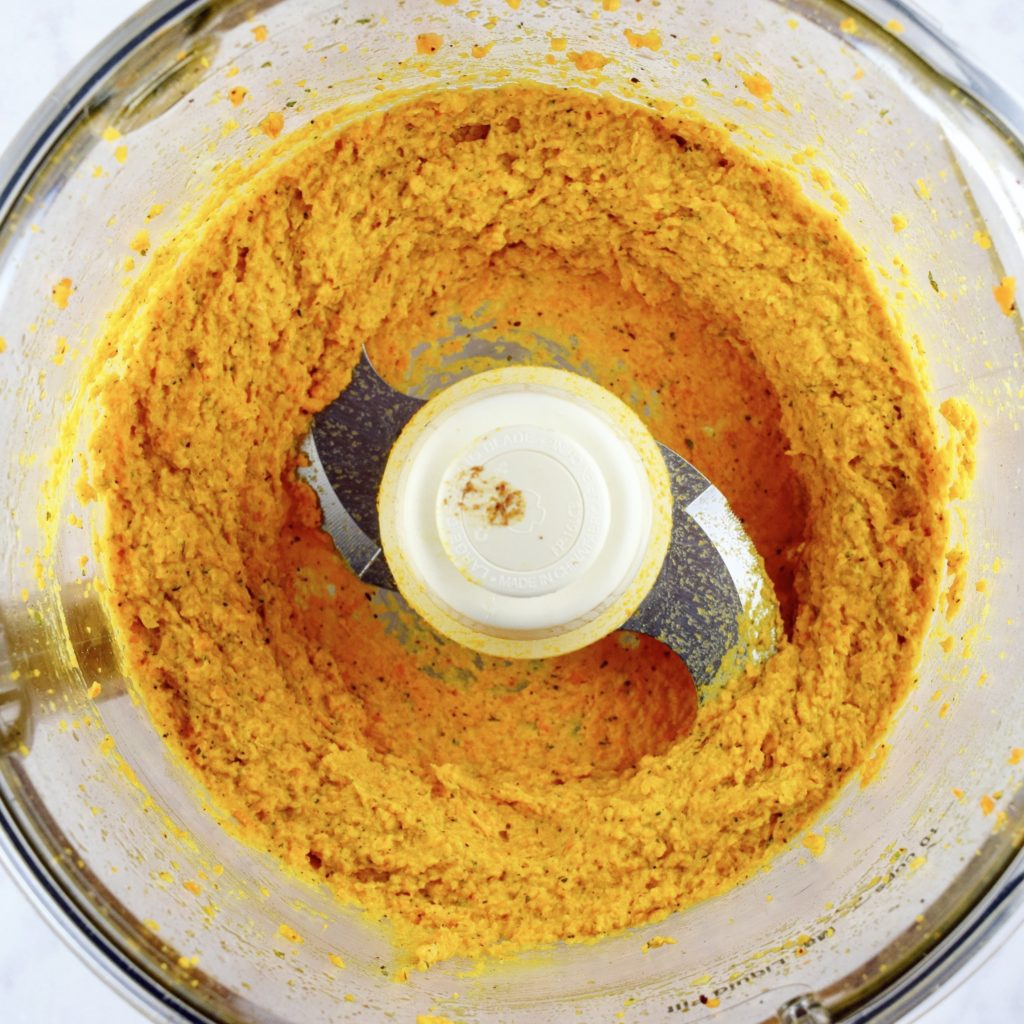
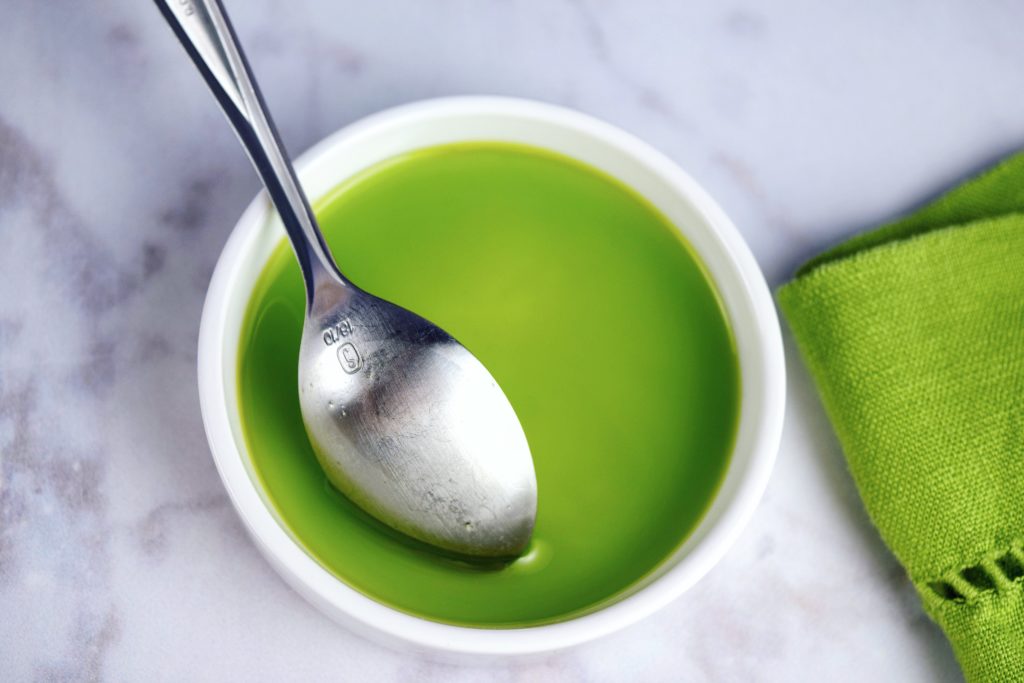
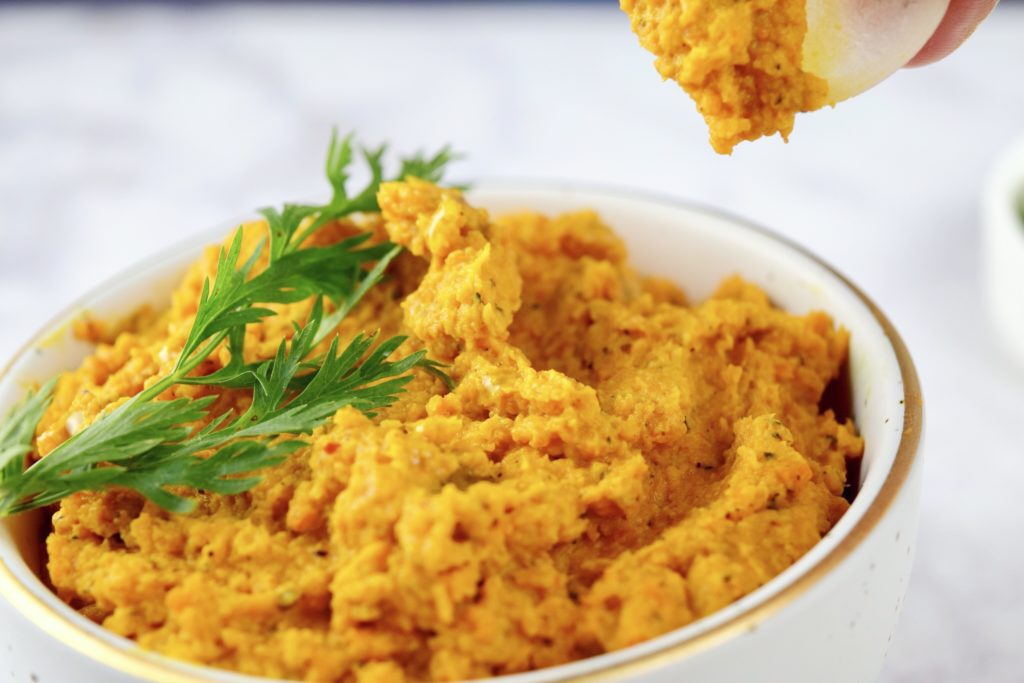
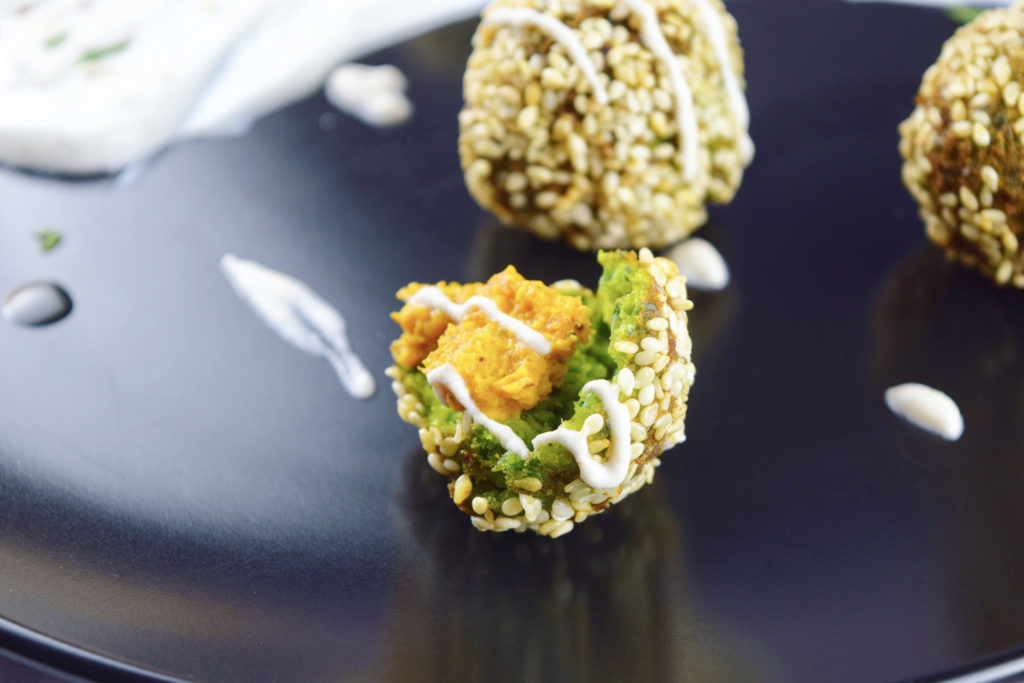
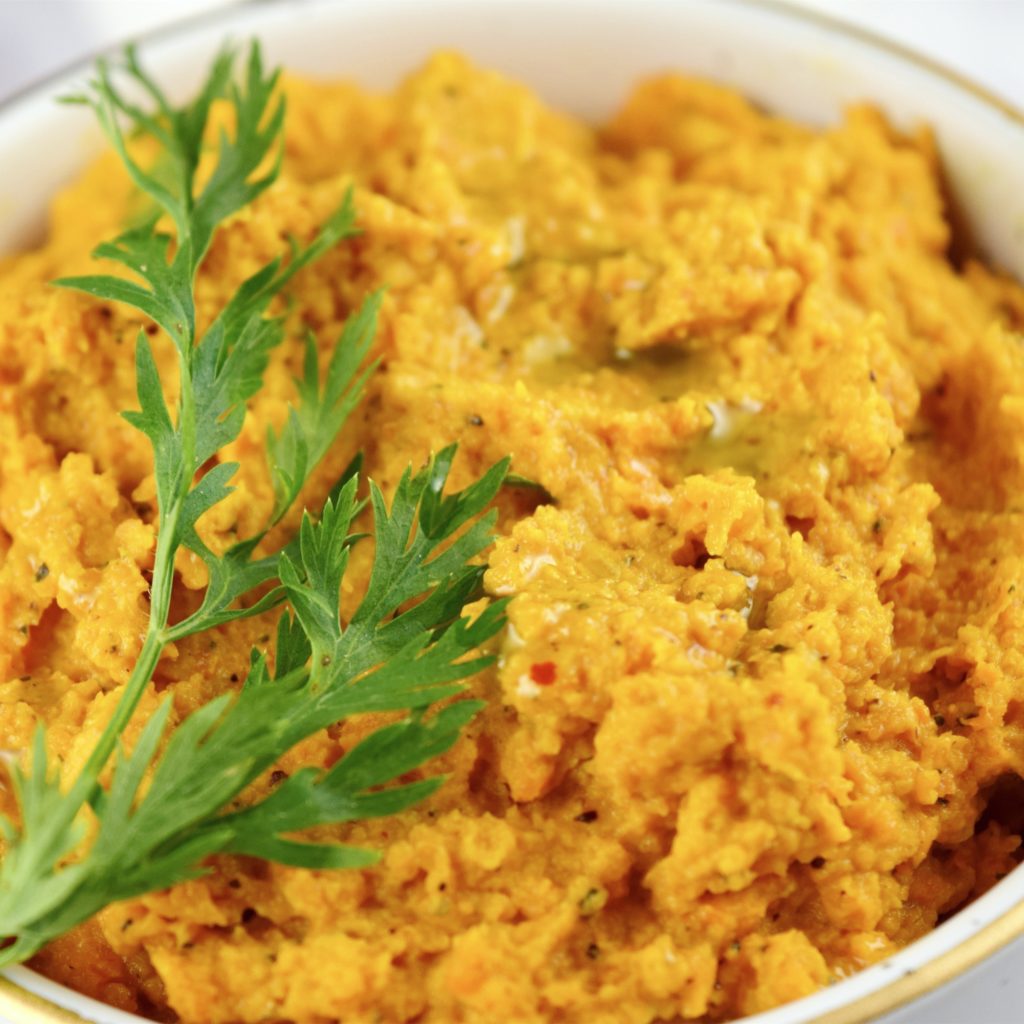


this stuff is amazing!!! I can’t stop eating it!
I’m so glad you’re loving it!! Thanks for letting me know 🙂
I made a batch to take camping last week…my friends went NUTS for it.
Quote from Hillary: “I love this stuff, so I’m positive it’s terrible for me.” 😀
Haha! Thats what I love to hear. Tastes so good it can’t possibly be good for you, right? 😉
Excellent appetizer.
I’m so glad you enjoyed it, Donna. Thanks for the feedback!
I’ve made this many times. A few times, I’ve added a bit of labneh for a creamier consistency.